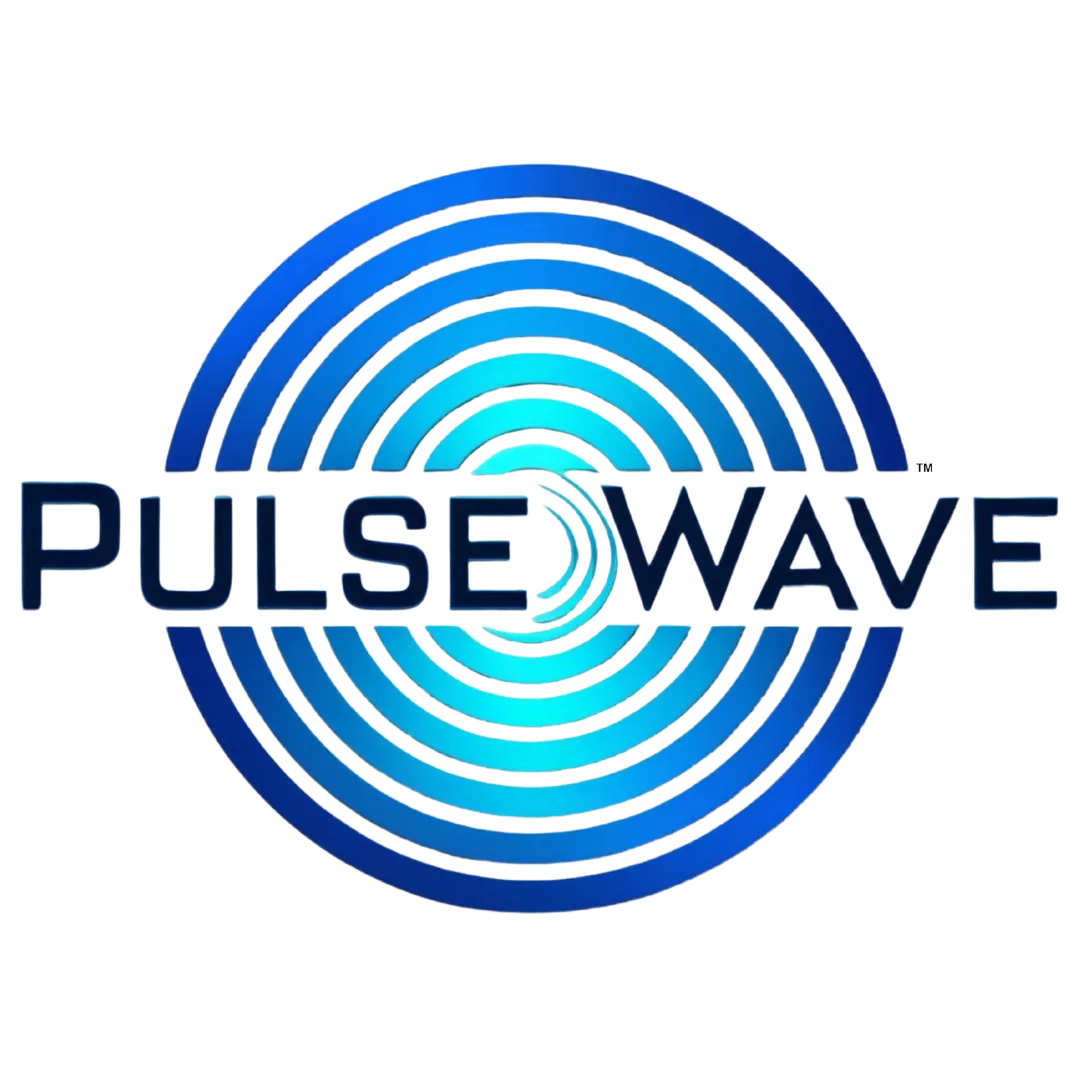PULSE WAVE™
TECHNOLOGY
PULSE WAVE™
TECHNOLOGY
UNDERSTANDING SHOCKWAVE PHYSICS
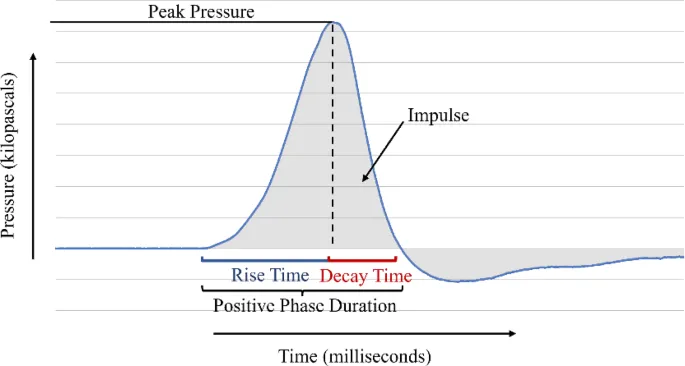
The Anatomy of A Focused Shockwave Propagation. After the initial shockwave is produced the Wave Front rises rapidly. The Rise Time is the amount of time it takes the wave to reach Peak Pressure, also termed the Wave Front or Shock Front. The peak pressure and the rise time are primarily influenced by the amount of power transferred to the device. The power is measured in Kilovolts kV where 1kV = 1000 volts. The wave sharply rises and then rapidly falls. The total amount of time from the rise of the wave to fall back to zero is termed the Positive Cycle, also termed the Positive Pressure Phase. The wave then enters into the Negative Cycle or Negative Pressure Phase. The wave value will then return to zero ending the wave cycle completely.
Key Concepts
Based on the amount of energy generated (kV or Kilovolts) will determine the Shockwave Dynamics. The higher the kV the higher the Peak Pressure, faster the Rise Time. These two variables determine the overall power of the Shockwave.
Once the Shockwave is produced, next we have to see where that wave goes in the tissues. Most Focused Shockwave Devices "focus" the wave to a point in the tissue. This point is termed the Focal Zone. This is where the wave will actually be rendering the therapeutic or clinical benefit in the tissue. The size and depth of the Focal Zone is one of the key differentiating factors of the different production methods and different devices.
When comparing devices the treatment depth and focal zone become very important. As well as Peak Pressure which details the strength of the wave.
The Focal Zone — Measurements and Metrics
Understanding the focal region is essential to evaluating system effectiveness. Here are the detailed metrics:
Focal Point:
Implications: Narrow focus enables high precision in targeting tissue or materials
Focal Volume:
Approximated as an ellipsoid using
🎯 1. Focal Point: The Precision Target
The focal point is the single location where the converging acoustic waves meet and where the highest pressure and energy flux density (EFD) occur.
Why It Matters
Maximized biological response: The highest pressure gradient (positive + negative phases) occurs here, triggering mechanotransduction or activation of healing factors exactly where needed.
Minimized collateral stress: Energy outside the focal point rapidly drops off, protecting overlying skin and underlying structures.
Accurate targeting: Clinicians can align the acoustic focus to the exact structure with in the tissue they wish to target.
📐 2. Focal Zone: The Therapeutic Volume
The focal zone isn’t a single spot—it’s a 3D volume around the focal point where the energy remains within a therapeutically effective range.
Why It Matters
Depth control: Devices with adjustable focal zones allow targeting at various tissue depths (superficial vs. deep structures).
Tissue coverage: A wider focal zone ensures uniform biological stimulation, reducing the risk of overtreatment or underexposure.
Reproducibility: Knowing the focal zone dimensions (length, width, depth) ensures consistent results across sessions and between patients.
Know you understand the key concepts and terms related to Shockwave Physics!
⚙️Guide For Understanding Power Output in Focused Shockwave Devices
1. Overview
Focused shockwave therapy (fESWT) delivers acoustic pulses with extremely rapid rise times (tens of nanoseconds) and microsecond-scale durations. These waves generate mechanical stress, microcavitation, and biochemical signaling in tissues.
The “power” of these devices is not expressed like an electrical wattage—it’s quantified in acoustic energy parameters derived from pressure-time profiles.
2. Core Measurements To Understand
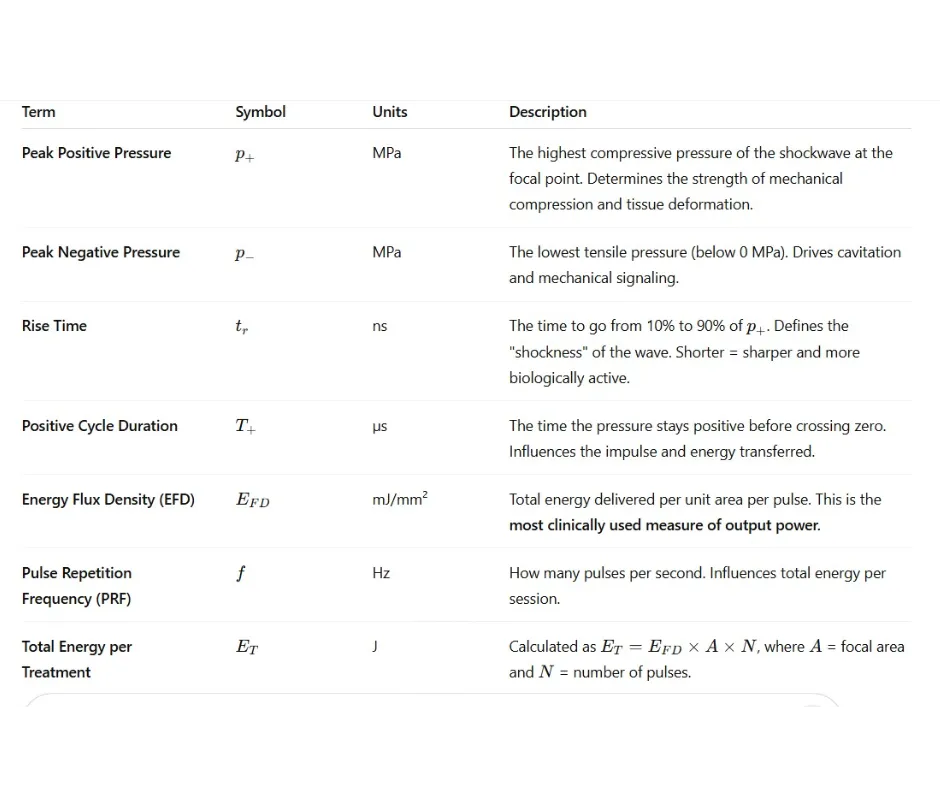
3. How Energy Flux Density Is Measured
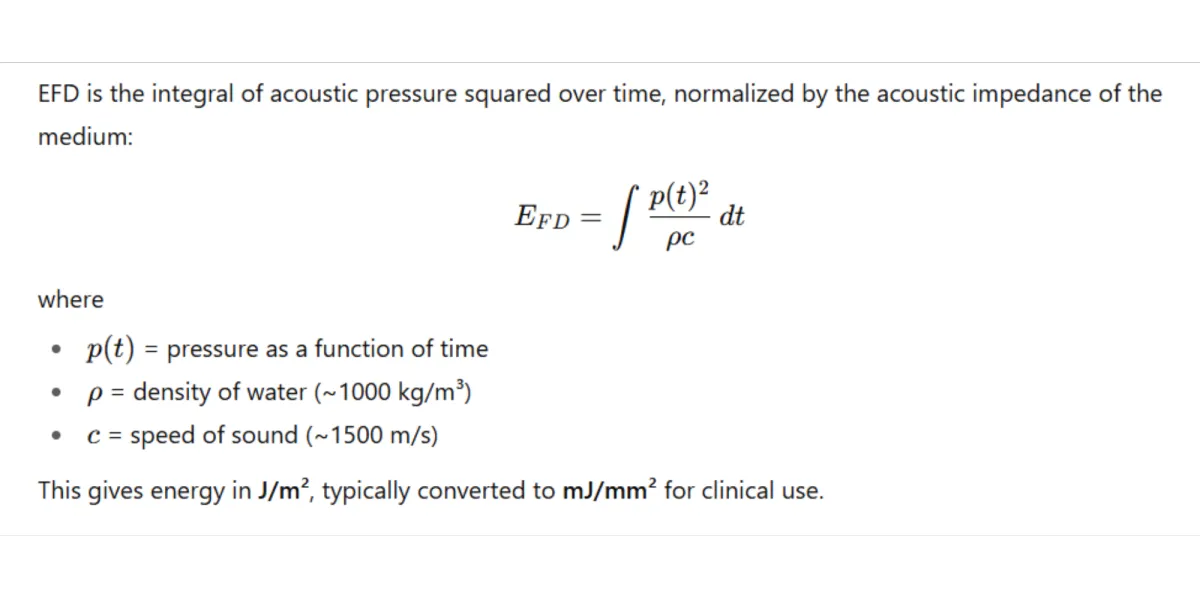
4. Factors That Influence Power Output
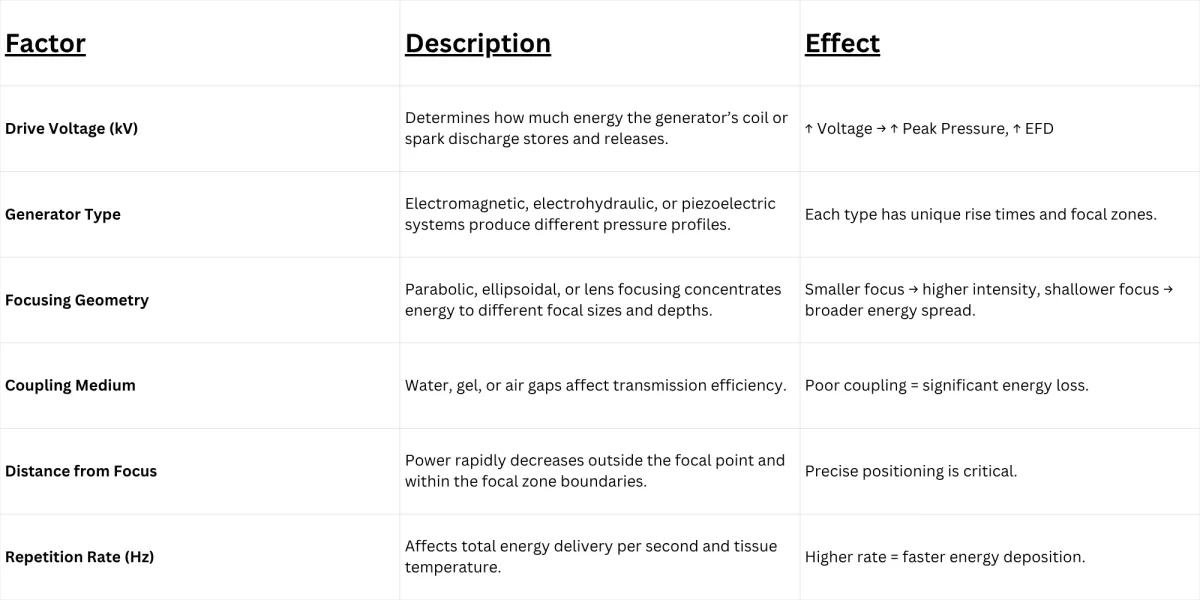
5. Typical Ranges
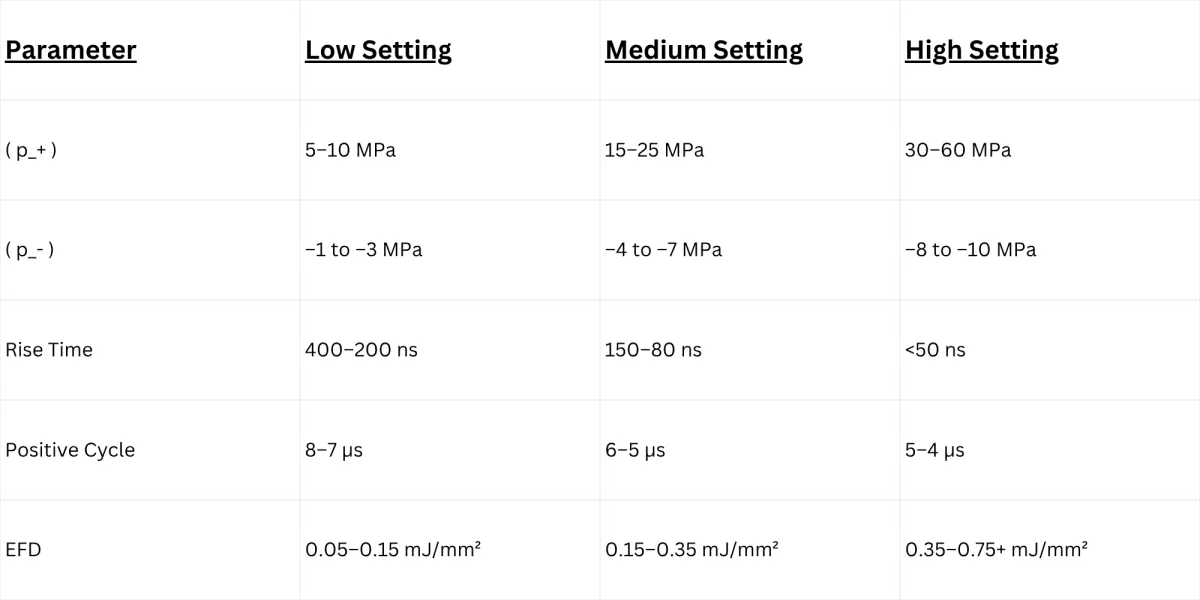
Average Heat Created During Focused Shockwave Pulses In Human Tissue
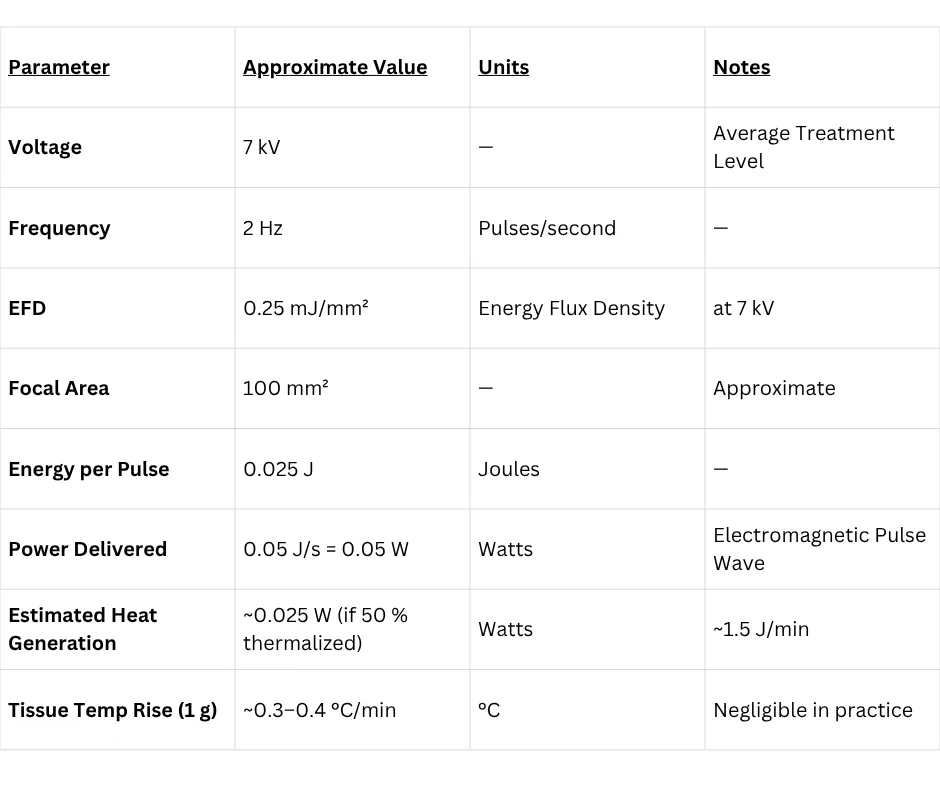
6. Interpreting Power in Context
When clinicians talk about “power”:
They often mean EFD × pulse count (energy dose).
The true acoustic power is proportional to p2p^2p2 and depends on focusing.
Doubling voltage doesn’t double biological effect—energy scales nonlinearly.
7. Clinical Takeaway
The focal point delivers the highest mechanical and biological energy.
The focal zone defines the 3D area where EFD remains therapeutic.
Understanding EFD and pressure dynamics helps tailor treatments for tissue type, depth, and pathology.
QUICK REFERENCE SUMMARY TABLE
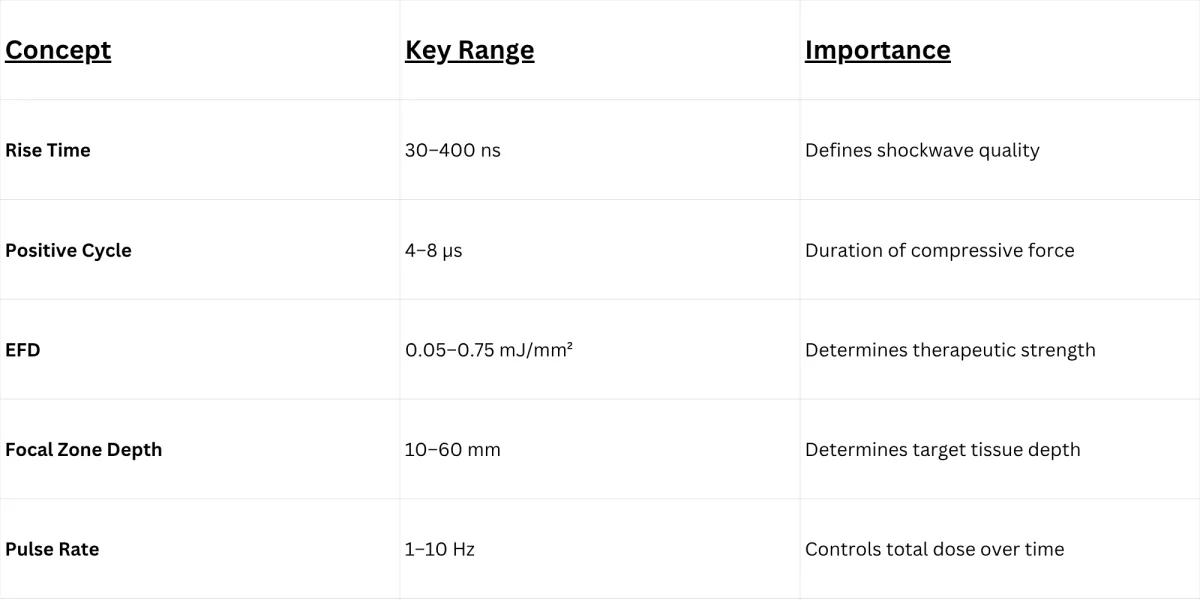
UNDERSTANDING THE DIFFERENT TYPES OF MACHINES AVAILABLE
1. ELECTROHYDRAULIC DEVICES
-This is the oldest of all the technology, first released in the 1970's.
-The basics of this technology have not changed since its inception.
-Utilizes a spark gap that is submerged in saline solution.
-The spark gap fires a spark which creates a pressure bubble (shockwave front) inside the fluid chamber.
-That pressure bubble is then captured and redirected or "focused" using a reflector or bowl that surrounds the fluid chamber.
-The result is a high powered wave front that is focused to a point in the tissue.
-The depth and power are controlled by the kV and the type of reflector.
-A wider reflector creates a wider focused wave with less penetration.
-A narrow reflector creates a more focused focal point with deeper penetration.
-Requires consistent maintenance to maintain saline solution balance and machine operation.
-Requires consumables: Either the entire handle needs to be replaced or the spark gap.
-The Spark Gap mechanism "consumes" itself with each firing. Due to be submersed in saline. The saline slowly corrodes the end of the spark gap, causing each firing to slowly eat away the ends of the spark plug resulting in an increased distance between them. Eventually the distance is to far for the spark connection to be made.
2. Piezoelectric Devices
-Piezoelectric focused shockwave systems use hundreds to thousands of small piezoelectric ceramic crystals (usually lead zirconate titanate, PZT) arranged on a spherical or concave surface. When a high-voltage pulse is applied, each crystal rapidly contracts and expands, producing an ultrasonic pressure wave. The geometry of the array focuses these micro-waves into a precise focal point within tissue.
-Piezoelectric requires little to no maintenance compared to Electrohydraulic.
-There are no consumables in this method but the head piece can be very fragile, so drops can cause a failure.
-Limited with power and penetration due to production method.
-Have to use standoffs in order to determine depth. Resulting in stopping treatment to change out heads.
3. Electromagnetic Devices
-Debuted in 1988 and have been improving and innovating ever since.
-3 Different Types of electromagnetic production:
1. Electromagnetic Cylindrical
-Uses a copper coil cylinder to create a rapid depolarization which creates the shockwave.
-Then uses an accessory reflector to capture the wave and direct it "focus" it to the tissue.
-This method is very powerful and can produce some of the highest power levels.
-Typically requires little maintenance and the hand pieces have long life spans.
2.Electromagnetic Flat
-Uses a flat copper plate to create a rapid depolarization and shockwave.
-This wave goes directly straight out as an unfocused wave.
-The wave is then directed by a separate accessory Focal Lens which is typically made of glass.
-This focal lens then focused the wave.
-This method requires very little maintenance.
-Hand Piece life span 1,000,000+
3.Electromagnetic Parabolic
-The newest form of focused shockwave production.
-This method uses a copper parabola that creates a prefocused wave form. This eliminates the need for any type of accessory reflector.
-This method produces a prefocused wave that is directed or focused right to the target tissue.
-This method is extremely efficient and provides 100% of the wave form energy to the target tissue.
-Requires nearly zero maintenance and has no parts that have contact with water.
-This technology has the longest life span of any other method regarding the handle or applicator.
-Hand Piece Life Span 1,000,000+
Our recommendation is Electromagnetic Production methods are far more reliable than other methods and typically have less maintenance and longer life spans.
Our goal with this page is to provide education and an unbiased opinion of available technolgoies.
WELCOME TO PULSE WAVE™ SUPPORT
Provider Support Phone Number 1-877-848-1110
Provider Support Email [email protected]
Provider Support is available Monday - Friday
9:00am to 5:00pm EST
Technical Support is available 24/7
